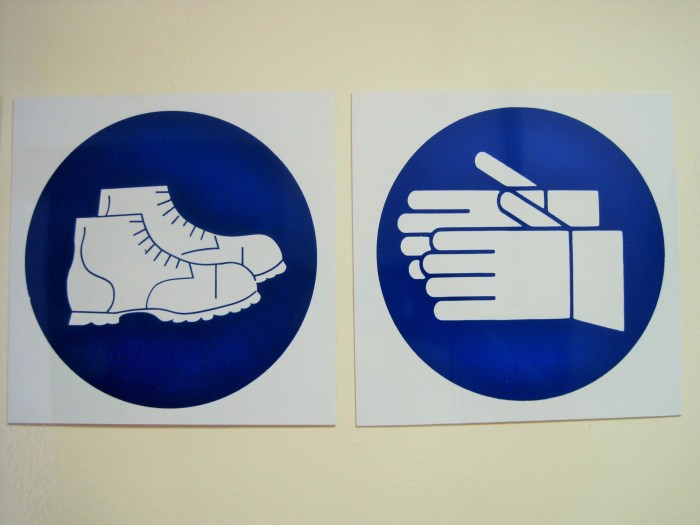
Safety drills for offices are essential practices designed to prepare employees for emergencies, ensuring that everyone knows how to respond effectively in critical situations. These drills not only enhance workplace safety but also reflect a company’s commitment to the well-being of its staff. By understanding various types of drills and their significance, organizations can create a culture of safety that minimizes risks and fosters confidence among employees.
From fire evacuations to lockdown procedures, the implementation of safety drills can significantly reduce the potential for harm during emergencies. Moreover, they help fulfill legal responsibilities, making it imperative for businesses to schedule regular drills and engage employees in the process.
Importance of Safety Drills
Conducting safety drills in an office environment is crucial for ensuring the well-being of employees and maintaining a secure workplace. These drills simulate emergency situations, allowing employees to practice their responses and familiarize themselves with safety protocols. Beyond preparedness, businesses have legal responsibilities to uphold workplace safety standards set by regulatory bodies, which can vary by region. Failure to conduct regular safety drills can lead to severe consequences, including legal penalties, loss of productivity, and increased risk during actual emergencies.Safety drills help mitigate a variety of potential risks, including fire hazards, natural disasters, and security threats.
By rehearsing evacuation routes and emergency procedures, organizations can significantly reduce confusion and panic during a real crisis, ultimately saving lives and protecting assets.
Types of Safety Drills
There are several types of safety drills that are essential for office environments, including fire drills, earthquake drills, and lockdown drills. Each type of drill serves a unique purpose and requires specific procedures to follow. Below is a table outlining the differences in procedures for each type of drill.
| Type of Drill | Procedure | Goals and Objectives |
|---|---|---|
| Fire Drill | Evacuate building using designated routes | Familiarize employees with evacuation procedures |
| Earthquake Drill | Drop, cover, and hold on until shaking stops | Prepare employees for earthquake scenarios |
| Lockdown Drill | Secure the building and remain quiet | Ensure readiness for active shooter situations |
Each drill’s specific goals and objectives focus on enhancing employee awareness and response mechanisms, ultimately fostering a safer work environment.
Planning Safety Drills
Planning effective safety drills requires a structured approach that includes careful coordination and execution. Here’s a step-by-step process to guide organizations in conducting successful drills:
- Identify the type of drill needed based on potential risks.
- Develop a clear timeline for the drill, including dates and times.
- Communicate the drill schedule to all employees well in advance.
- Designate safety coordinators to oversee the drill.
- Conduct a pre-drill briefing to explain procedures and expectations.
- Execute the drill and observe employee responses.
- Debrief after the drill to discuss successes and areas for improvement.
Additionally, a checklist of items needed for successful drill execution includes:
- Communication devices (e.g., walkie-talkies)
- Maps of evacuation routes
- First aid kits
- Emergency contact information
- Feedback forms for participants
Scheduling and frequency are critical; organizations should conduct drills at least twice a year to maintain readiness and reinforce safety procedures.
Employee Training and Involvement

Training employees on safety protocols is vital for creating a culture of safety within the workplace. Effective strategies for training include:
- Conducting workshops that cover safety procedures and emergency contacts.
- Utilizing role-playing exercises to simulate various emergency scenarios.
- Providing online training modules for flexible learning.
Engagement activities encourage employee participation during drills. Examples include safety trivia games, team competitions, or recognition programs for those who actively participate in safety training. Business management plays a pivotal role by fostering a supportive environment for training initiatives and allocating necessary resources for successful implementation.
Evaluating Drill Effectiveness
To ensure safety drills are effective, organizations should establish a framework for evaluation. Key performance indicators (KPIs) to measure success include:
- Time taken to evacuate and reach safe zones.
- Number of employees who followed protocols accurately.
- Feedback collected post-drill regarding clarity of instructions.
Feedback from participants after drills is essential for continuous improvement. Collecting insights from employees helps identify strengths and weaknesses in the current safety protocols, allowing organizations to adjust their training and procedures accordingly.
Communication Strategies
Effective communication in the workplace is critical for announcing and conducting safety drills. Strategies include:
- Using emails and bulletin boards to share drill schedules.
- Holding informational meetings to discuss safety procedures.
- Creating clear, concise safety communication materials that are easily accessible.
A well-organized plan for communicating drill schedules and protocols ensures that all staff members are informed and prepared, reducing confusion during actual emergencies.
Role of Technology in Safety Drills
Technology can significantly enhance the effectiveness of safety drills. Tools and software that facilitate safety training include:
- Virtual reality simulations for immersive training experiences.
- Mobile apps for real-time safety alerts and updates.
- Digital platforms for tracking training completion and drill performance.
The rise of remote work presents unique challenges for safety drills and communication. Businesses must adapt their strategies to ensure all employees, including remote workers, are trained and informed about safety protocols.
Integration with Business Management
Safety drills should be integrated into broader business management strategies to enhance their effectiveness. This integration can be achieved by:
- Aligning safety drills with overall risk management strategies.
- Incorporating safety training into team-building exercises to foster collaboration.
- Utilizing drills as opportunities for innovation and improvement within safety procedures.
By embedding safety drills into the company culture, organizations can promote a proactive approach to risk management, ensuring employee safety is a top priority.
Case Studies and Best Practices

Examining case studies of organizations that have successfully implemented safety drills reveals valuable lessons. For instance, a tech company that conducted regular fire drills found that employee readiness significantly improved over time, leading to quicker evacuations. Conversely, a notable failure in a healthcare facility highlighted the need for comprehensive training, as their drill response was chaotic and disorganized.Best practices for conducting safety drills across diverse office environments include:
- Customizing drills to address specific risks relevant to the workplace.
- Involving all levels of staff in planning and execution.
- Regularly updating safety protocols based on feedback and changing circumstances.
Future Trends in Workplace Safety
Emerging trends in workplace safety, such as the increasing focus on mental health and well-being, are shaping the future of safety drills. Organizations are beginning to recognize that mental preparedness is just as important as physical readiness during emergencies. Additionally, globalization is impacting safety protocols, as businesses must adopt practices that comply with varying international standards.Innovations, including advanced training technologies like augmented reality and AI-driven safety assessments, have the potential to reshape how safety training and drills are conducted.
These advancements promise to create more engaging and effective training experiences, ultimately enhancing workplace safety across the board.
Wrap-Up
In summary, safety drills for offices are not just a regulatory requirement but a crucial aspect of workplace safety management. Companies that prioritize these drills foster a proactive environment where employees feel secure and prepared for unexpected events. By continuously evaluating and adapting their safety protocols, organizations can ensure that their workplace remains a safe haven for everyone involved.
Clarifying Questions
How often should safety drills be conducted?
Safety drills should ideally be conducted at least twice a year, but frequency can depend on the nature of the workplace and specific risks involved.
What should be included in a safety drill plan?
A safety drill plan should include objectives, types of drills, communication methods, roles of participants, and evaluation criteria.
How can employees be encouraged to participate in drills?
Engaging activities, clear communication about the importance of drills, and involving employees in the planning can boost participation.
What technology can assist with safety drills?
Tools such as training software, emergency notification systems, and virtual reality simulations can enhance the effectiveness of safety training.
Are there specific safety drills for remote workers?
Yes, remote workers should have guidelines for emergencies like fires or medical issues, and virtual drills can be conducted to ensure everyone knows what to do.



